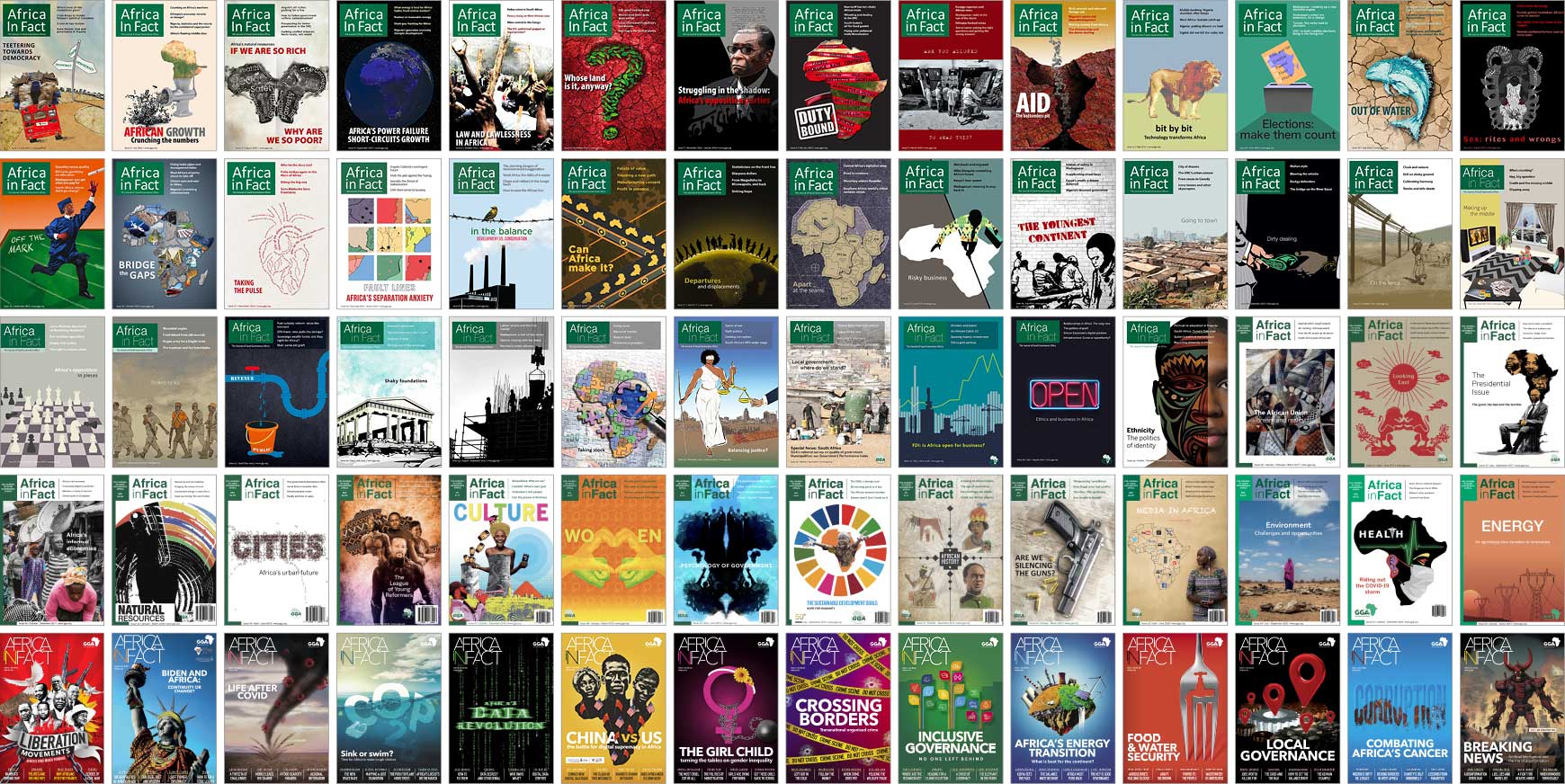Although Africa is abundant in natural resources and biodiversity, it faces pressing socio-economic issues. Inclusive conservation provides a sustainable solution by integrating local communities’ needs, knowledge, and participation into environmental management. Unlike traditional conservation models prioritising biodiversity over local needs, inclusive conservation recognises local people as vital stakeholders, ensuring equitable benefits for nature and communities.
Historically, formal conservation areas were often established during the colonial era, leading to significant impacts on humans, including forced removals and the criminalisation of local hunting and livelihood activities. Indigenous communities were frequently cut off from their traditional resources, resulting in the militarisation of conservation and the marginalisation of those who hunt or forage in protected areas. The legacy of these colonial practices continues to affect regions like South Africa’s Kruger National Park, Niassa Game Reserve in Mozambique, and Kenya’s Maasai Mara.
Militarised conservation, while controversial, has had some success in protecting certain areas from poaching and wildlife trafficking, particularly in response to organised crime driven by demand for products like rhino horn, elephant ivory, and shark fins. The Global Initiative against Transnational Organised Crime reports that the illicit trade in animal products ranked fourth in 2023, with plant trafficking closely following.
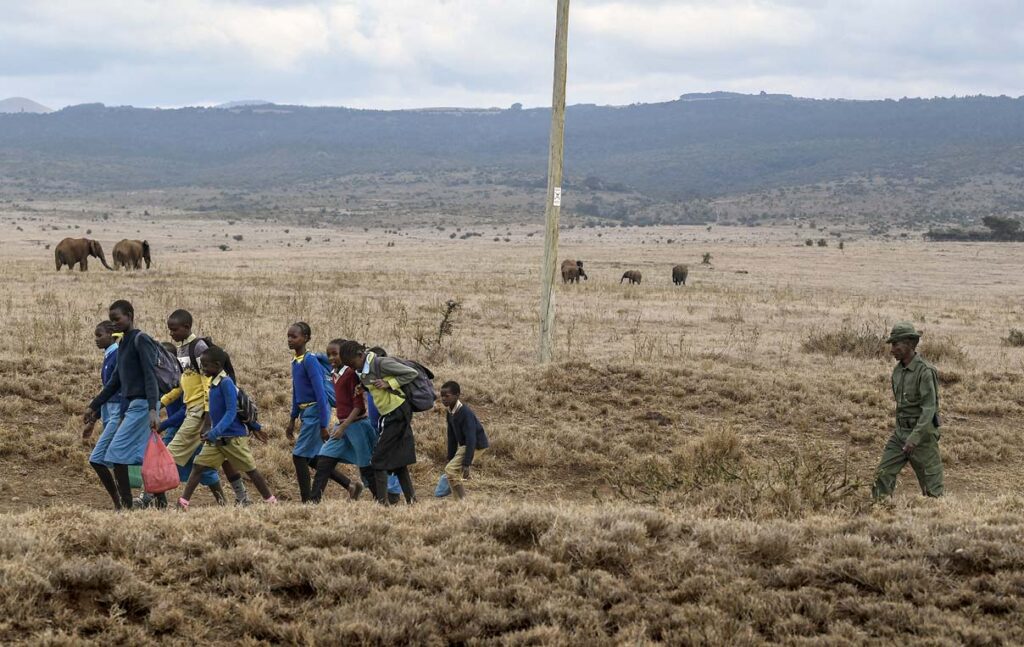
How does this link to indigenous people and local communities? This dynamic poses significant challenges for local communities, who may be coerced into poaching or aiding traffickers, leading to strained relations. Such pressures can create a zero-sum game where neither communities nor conservation efforts benefit, ultimately driving exclusionary practices by park management. Organised crime syndicates generally function as local crime operations, with ties to broader transnational organised crime that help facilitate the movement of illicit wildlife products to the destination markets. This makes responses challenging for local law enforcement, including park rangers, whose mandate to fulfil law enforcement functions generally ends at the fence line of the park. This undermines the principle of inclusive conservation, making building sustainable partnerships between local populations and conservation initiatives difficult.
Militarised conservation has been successful, primarily in east and southern Africa, though areas like Somalia and northern Mozambique face challenges due to insurgent activity, as do areas where violent non-state actors have entered parks to avoid law enforcement or counter-terrorism operations and, in some cases, to establish bases for further operations. Parks such as Virunga National Park in the Democratic Republic of Congo (DRC) and the Park West-Arly-Pendjari Transfrontier complex that transverses Niger, Burkino Faso, and Benin, have experienced incursions and attacks by violent non-state actors, complicating management and safety for staff and local communities. In that sense, some protected areas have become battlegrounds between violent non-state actors and state forces, with some becoming contested terrain and, in many cases, very challenging to manage.
The conservation framework in South Africa differs significantly, rooted in a history of exclusionary policies prioritising white land ownership and marginalising local populations. Despite being designated as people-free zones, areas like the Kavango-Zambezi Transfrontier Conservation Area (KAZA) are home to more than 2.5 million residents who depend on these landscapes for their livelihoods. This highlights the opportunity for inclusive conservation, human security, food security and the possibility of a truly balanced approach to conservation.
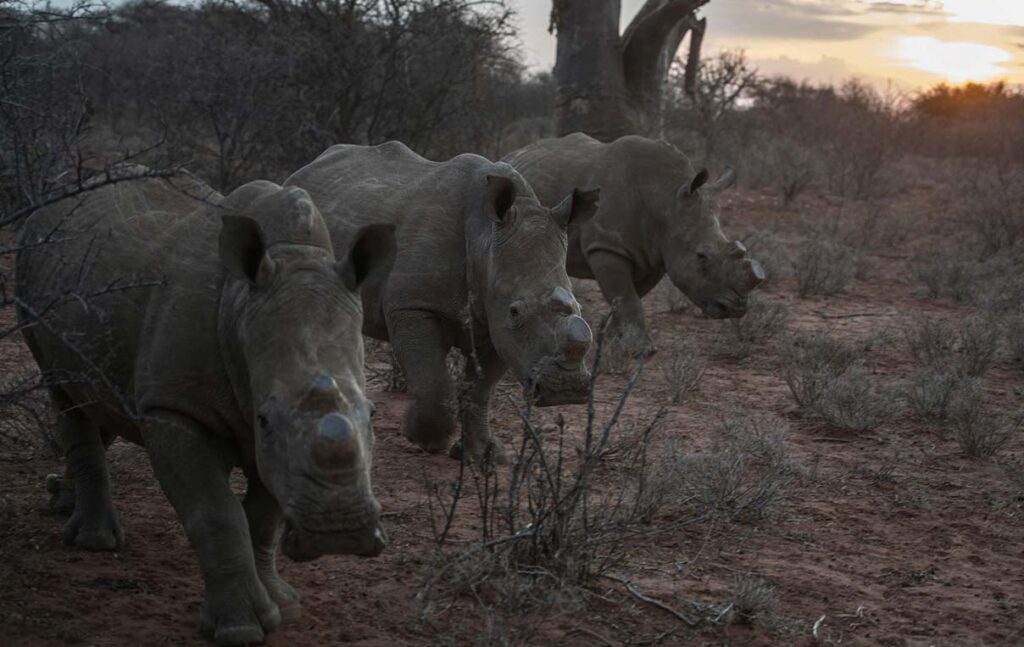
The reality of indigenous and local communities engaging in migratory practices further emphasises the need for parks to adopt inclusive conservation perspectives. Africa’s vast network of at least 27 transboundary parks (both terrestrial and marine areas) covering approximately 847 million hectares across the continent faces pressures from various industries, including mining and agriculture, and other specialist land-users such as energy producers and extractive industries, which threaten conservation efforts.
While community engagement has long been emphasised, participatory strategies have limitations, especially in South Africa, where there is a growing recognition of the rights of communities historically tied to these lands. A shift towards inclusive conservation involves integrating these communities into decision-making processes, ensuring they benefit from conservation initiatives and have a stake in management. Organisations like African Parks, the Peace Parks Foundation and the Wildlife Conservation Society are advancing this model, creating opportunities for a wildlife economy through ecotourism. Successful examples in Gorongosa (Mozambique) and Kruger National Parks demonstrate the economic potential of ecotourism, benefiting both conservation efforts and local communities.
This inclusive approach is crucial for Africa, where deep socio-cultural ties to the environment exist amid socio-economic, geopolitical, and global challenges. According to the United Nations Environment Programme, inclusive conservation fosters local participation, addressing community needs while ensuring biodiversity sustainability. It empowers communities to manage resources and create sustainable livelihoods, promoting peacebuilding and cooperation in conflict-affected areas while safeguarding ecosystems and fostering trust.
Inclusive conservation has proven to be a powerful tool for socio-economic development in a stable region, with the Northern Rangelands Trust (NRT) in Kenya being one of the most successful. Established in 2004, NRT unites more than 45 indigenous communities to manage conservancies, focusing on wildlife protection and economic growth through sustainable tourism and livestock farming. Local communities have control over land and resources, empowering them in conservation decisions. This model has led to significant benefits, including job creation as rangers and guides, increased tourism revenue, and enhanced security through community-led anti-poaching initiatives. The funds generated through the eco-tourism industry support schools, healthcare, and infrastructure development.
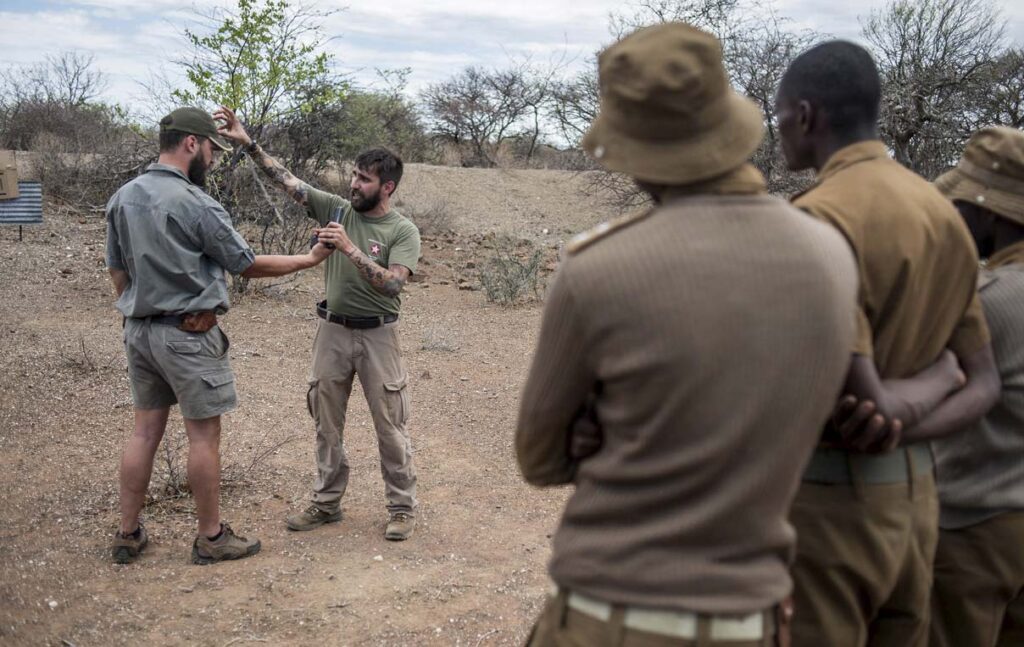
Namibia’s Community-Based Natural Resource Management (CBNRM) programme is another example of inclusive conservation. Since the 1990s, Namibia has pioneered community-led conservation initiatives that empower indigenous communities to manage their natural resources. Establishing communal conservancies has allowed local people to benefit from eco-tourism, trophy hunting, and the sustainable use of wildlife resources.
In the Nyae Nyae Conservancy, for example, the indigenous San community has been able to preserve their cultural heritage while generating income through wildlife tourism. The conservancy model has helped reduce poverty, improve social services, and enhance food security in one of the country’s most impoverished regions. The conservancy is remote and scarcely populated, yet it generates $250,000 to $300,000 annually.
In South Africa, the Transfrontier Conservation Areas (TFCAs) demonstrate the potential of inclusive conservation by spanning multiple countries and fostering cooperation among nations and local communities. The Great Limpopo Transfrontier Park, which borders South Africa, Mozambique, and Zimbabwe, exemplifies this. Through inclusive conservation, local communities manage natural resources, benefit from eco-tourism, and collaborate across borders, contributing to regional socio-economic development and serving as a model for Southern African Development Community (SADC) countries.
Africa, however, faces numerous threats to biodiversity protection, including political instability and conflict that disrupt conservation efforts, as seen, for example, in the DRC, where armed groups exploit natural resources. Corruption and weak governance exacerbate illegal poaching and resource exploitation, depriving local communities of conservation benefits. Land tenure issues complicate matters, excluding indigenous groups like Kenya’s Maasai from decision-making and economic opportunities.
Climate change and environmental degradation, particularly in the Sahel, increase competition for dwindling resources, while population growth and urbanisation lead to habitat loss. Marginalised groups, such as women and indigenous peoples, often face exclusion from conservation initiatives, exemplified by the displacement of the Batwa in Uganda. Global demand for Africa’s natural resources fuels illegal wildlife trade, further undermining conservation efforts. Economic pressures from poverty push communities towards unsustainable practices, as seen in Madagascar, where deforestation threatens biodiversity despite ongoing conservation initiatives. These interconnected challenges highlight the complexity of achieving inclusive conservation in Africa.

In conflict-affected areas, inclusive conservation is critical in promoting peace and stability. A key example is the DRC’s Virunga National Park, which, despite ongoing armed conflict, employs more than 760 local rangers, also former militants and ex-combatants. This model protects endangered species like mountain gorillas and contributes to regional stability. Virunga generates approximately $48.9 million annually, illustrating the economic benefits of conservation. By providing livelihoods and promoting environmental stewardship, the park has strengthened community ties. Virunga has implemented hydroelectric projects that deliver clean energy, reducing dependence on illegal charcoal production, a major cause of deforestation and conflict.
These inclusive conservation efforts significantly improve local lives while safeguarding vital biodiversity, demonstrating a powerful link between environmental protection and socio-economic development. Dr Emmanuel de Merode, the Director of Virunga National Park, explains the importance of conservation in conflict regions: “Conservation in a conflict zone is not just about protecting wildlife. It’s about building a future where people and nature can coexist. By offering jobs, education, and security, we can break the cycle of violence and create lasting peace.”
In South Sudan, the establishment of Boma and Bandingilo National Parks as community-led conservation areas has created opportunities for former combatants to transition to peaceful livelihoods, helping to promote stability and development. Conservation organisations, such as the Wildlife Conservation Society (WCS), have partnered with local communities to protect wildlife and develop eco-tourism by providing training and employment opportunities, which have helped to reduce tensions and promote reconciliation.
By involving local communities in conservation efforts, inclusive models create a wide range of employment opportunities, from park rangers to eco-tourism operators. In Kenya, Namibia, and the DRC, people have found stable, well-paying jobs through inclusive initiatives. These jobs not only provide income but also foster a sense of ownership and pride in protecting natural resources.
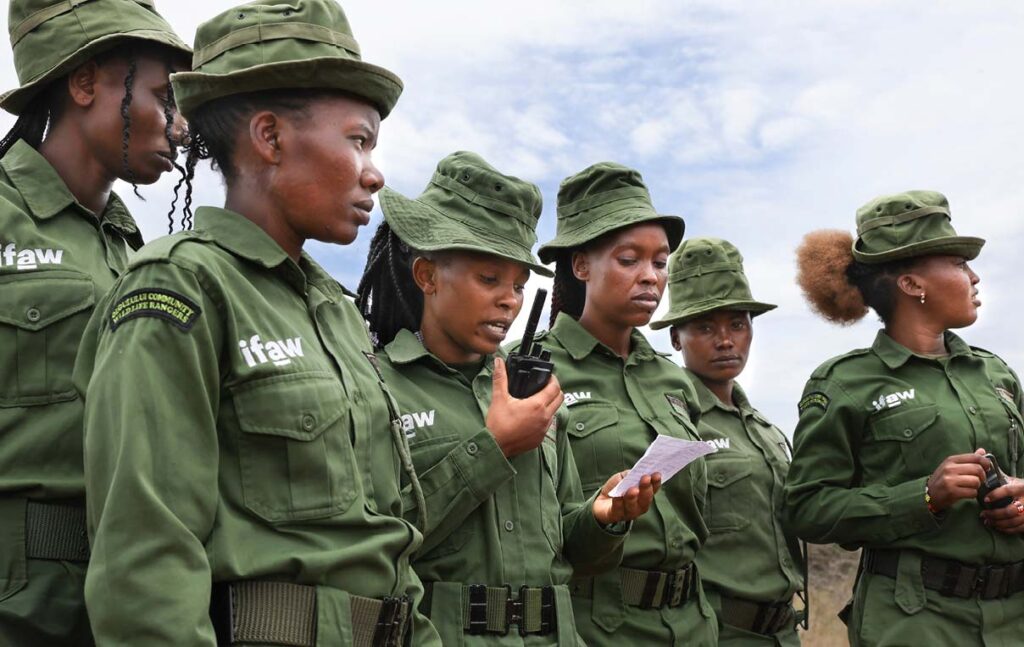
In the blue economy, coastal communities benefit from sustainable fishing practices and marine conservation initiatives that protect their livelihoods. In Mozambique, inclusive conservation projects in marine protected areas have improved fish stocks, ensuring long-term food security for local fishermen.
Local communities should be regarded as co-managers of conservation efforts rather than mere beneficiaries, as they play a crucial role in bridging the knowledge exchange between scientists and indigenous groups, fostering solutions that integrate both traditional and modern approaches. Empowering communities through training programmes that enhance local conservation management capacities equips them with the tools for effective engagement while sharing their expertise and traditional practices to ensure preservation.
Africa’s socio-economic development is closely tied to the continent’s complex ethnic dynamics. Ethnic identity, a key driver of political allegiances and resource access, often supersedes state interests, influencing policy implementation, and conservation efforts. In conflict regions, engaging local ethnic communities in conservation initiatives can reduce tensions and promote social cohesion, while in stable areas, marginalising these groups risks undermining successful conservation. By incorporating ethnic diversity into conservation strategies, Africa can foster local ownership, promote sustainable resource management, and support broader national development.
Nevertheless, significant external challenges exist, including global climate change, dependence on international aid, foreign investment in extractive industries, and international wildlife trafficking. Although Africa contributes minimally to global emissions, it suffers disproportionately from climate impacts like droughts and floods, which degrade ecosystems and push communities towards unsustainable practices.
While international aid is crucial for conservation efforts, over-reliance on donor funding can diminish local ownership and sustainability, as seen in, for example, Central Africa, where donor agendas may prioritise biodiversity over community development. Foreign investments in mining and oil exploration, such as in Gabon, further degrade the environment and spark debates on balancing development with conservation. International wildlife trafficking, driven by global demand, fosters corruption and violence and undermines local initiatives.
Long-term success in inclusive conservation requires investment in infrastructure, education, and capacity building, supported by organisations such as the World Bank and UNDP, increased private sector contributions, and government buy-in. Inclusive conservation can tackle Africa’s socio-economic challenges by empowering local communities, fostering sustainable development, and promoting peace. In stable regions, it drives job creation and resilience to climate change; in conflict areas, it offers pathways to peace through shared incentives for resource protection.
As Virunga National Park’s de Merode puts it: “Conservation is not just about saving wildlife; it’s about building a better future for people. Inclusive conservation is the key to unlocking Africa’s potential.”



